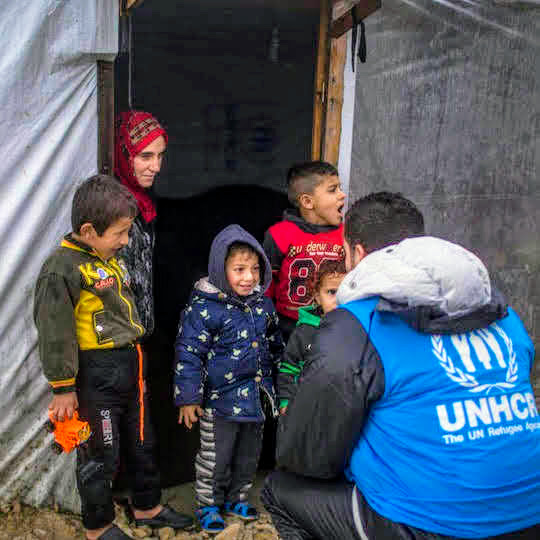Vulnerability Assessment of Syrian Refugees - 2017
Lebanon, 2017
Get MicrodataIdentification
UNHCR_LBN_2017_VASYRv2.1
Vulnerability Assessment of Syrian Refugees - 2017
| Name | Country code |
|---|---|
| Lebanon | LBN |
The 2017 Vulnerability Assessment of Syrian Refugees in Lebanon (VASyR) assesses the situation of a representative sample of registered Syrian refugee households to identify situational changes and trends. With over one million registered refugees within its borders, Lebanon hosts the second-largest population of Syrian refugees in the region, and the highest per capita population of refugees in the world. Since the first assessment, the VASyR has been an essential tool for partnership and for shaping planning decisions and programme design. It is the cornerstone for support and intervention in Lebanon. A total of 4966 households were interviewed.
The contents of this report, jointly issued by the United Nations High Commissioner for Refugees (UNHCR), the United Nations Childrens Fund (UNICEF) and the World Food Programme (WFP, dataviz.vam.wfp.org), demonstrate that economic vulnerability has worsened, with more than half of refugees living in extreme poverty, and that food insecurity rates are stable, but remain high.
Household and individual.
Version
v2.1: Edited, cleaned and anonymised data.
Scope
The scope includes:
- key indicators on household demographics
- safety and security
- accomodation
- health
- food security
- livelihoods
- expenditures
- food consumption
- debt
- coping strategies and assistance
- intention to return
- education
| Topic |
|---|
| Health and Nutrition |
| Health |
| Water Sanitation Hygiene |
| Food security |
| Community Services |
| Education |
| Livelihood & Social cohesion |
Producers and sponsors
| Name |
|---|
| UNHCR |
| UNICEF |
| WFP |
Sampling
A two-stage cluster sampling methodology was utilized. The population was stratified by district and governorate in order to obtain representative information at both geographical levels.
To ensure geographical representativeness, 30 clusters were selected per district following a random methodology proportional to refugee population size. In each cluster, five or six randomly selected households were visited. In order to have representative information at the governorate level, additional clusters were selected in Beirut and Akkar, which are the only districts that are also governorates. All other governorates had more than one district to sample.
Weights were assigned to each cluster group according to the population of refugees registered in the region and country. The weighting system was used to compensate for the unequal probabilities of a household being included in the sample.
Survey instrument
The questionnaire included key information on household demographics, arrival profile, registration, protection, shelter, WASH, assets, health, education, security, livelihoods, expenditures, food consumption, coping strategies, debts and assistance, as well as infant and young feeding practices.
Data collection
| Start | End |
|---|---|
| 2017-05-09 | 2017-05-24 |
| Name |
|---|
| Caritas |
| Danish Refugee Council |
| Intersos |
| Makhzoumi Foundation |
| Premiere Urgence Aide Medicale Internationale |
| Social, Humanitarian, Economical Intervention for Local Development |
| World Vision International |
The data was collected between 9 and 24 May 2017. Data collection was monitored centrally by the information management unit to ensure all clusters were visited and in accordance with the plan. Field data collection was undertaken by seven partners. The data collected was registered by electronic devices using Open Data Kit (ODK) software and uploaded automatically on UNHCRs Refugee Assistance Information System (RAIS) platform. Teams made appointments with the interviewees the day before the visit in order to reduce the risk of preparation by the household prior to the visit and therefore minimize bias.
Data Access
UNHCR, WFP, UNICEF (2017) Vulnerability Assessment of Syrian Refugees in Lebanon, UNHCR microdata library, https://microdata.unhcr.org
Contacts
| Name | Affiliation | |
|---|---|---|
| Curation team | UNHCR | microdata@unhcr.org |
Metadata production
UNHCR_LBN_2017_VASYR_DDI_v1.0
| Name |
|---|
| UNHCR |
